-
Executive Summary
-
Market Introduction
-
Definition 17
-
Scope of the Study 17
-
List of Assumptions
-
Market Structure 18
-
Key Takeaways 19
-
Market Insights
-
Research Methodology
-
Research Process 25
-
Primary Research 26
-
Secondary Research
-
Market Size Estimation 27
-
Forecast Model 28
-
Market Dynamics
-
Introduction 30
-
Drivers Impact Analysis
- Increasing Demand for Thioglycolic Acid in the Cosmetics and
- Growing Demand for Thiochemicals in the
-
Personal Care Industry 31
-
Oil & Gas Industry 32
-
Restraints Impact Analysis 34
-
Volatile Raw Material Prices and Toxicity Concerns 34
-
Opportunities
- Increasing Demand for PVC Thermal Stabilizers 35
- Growing Preferences for Bio-Based Alternatives 35
-
Trends 35
-
Market Factor Analysis
-
Supply Chain Analysis 37
- Raw
- Thioglycolic Acid Producers 38
- Distributors
- Application 38
-
Material 37
-
-
Porter’s
- Threat of New Entrants 39
- Threat
- Threat of Substitutes 39
- Bargaining
- Bargaining Power of Buyers 39
-
Five Forces Model 38
-
of Rivalry 39
-
Power of Suppliers 39
-
Global Thioglycolic acid Market, by Type
-
Introduction 41
-
High-Purity Grade 42
-
Low-Purity Grade 43
-
Technical Grade
-
Global Thioglycolic Acid Market, by Application
-
Introduction
-
Cosmetics 50
-
PVC heat-stabilizer 51
-
Oilfield chemicals 52
-
Cleaning Formulations 53
-
Leather
-
Processing Chemicals 54
-
Chain Transfer Agent 55
-
Metals
-
Recovery 56
-
Agrochemicals 57
-
Others 58
-
Global Thioglycolic acid Market, by Region
-
Introduction 60
- US 66
- Canada 68
-
North America 63
-
Europe
- Germany 73
- UK 75
- France 77
- Italy 81
- Russia 83
- Poland
- Benelux 87
- Rest of Europe 89
-
Spain 79
-
Asia-Pacific
- China 94
- Japan 96
- India 98
- Rest of Asia-Pacific 102
-
South Korea 100
-
South America
- Brazil 107
- Mexico 109
- Argentina
- Rest of South America 113
-
Middle East & Africa
- G.C.C. 118
- Turkey 120
- South
- Rest of Middle East & Africa 124
-
Africa 122
-
Competitive
-
Landscape
-
Competitive Landscape 128
- Introduction
- Key Development Analysis 128
- List of Raw Material
-
Suppliers 129
-
Company Profiles
-
Arkema 131
- Financial Overview 131
- Products
- Key Developments 132
- SWOT Analysis
- Key Strategies 132
-
Company Overview 131
-
Offered 132
-
-
Merck KGaA
- Company Overview 133
- Financial Overview 133
- Key Developments 134
- SWOT
- Key Strategies 134
-
Products Offered 133
-
Analysis 134
-
Thermo Fisher Scientific,
- Company Overview 135
- Financial Overview
- Products Offered 135
- Key Developments 136
- Key Strategies 136
-
Inc. 135
-
SWOT Analysis 136
-
Daicel Corporation
- Company Overview 137
- Financial Overview 137
- Key Developments 138
- SWOT
- Key Strategies 138
-
Products Offered 137
-
Analysis 138
-
Bruno Bock Chemische
- Company Overview 139
- Products Offered 139
- Key
- SWOT Analysis 139
- Key Strategies
-
Fabrik GmbH & Co. KG 139
-
Financial Overview 139
-
Developments 139
-
Tokyo Chemical Industry Co. Ltd. 140
- Company
- Financial Overview 140
- Products Offered
- Key Developments 140
- SWOT Analysis 140
-
Overview 140
-
Key Strategies 140
-
Qingdao LNT Chemical Co., Ltd. 141
- Financial Overview 141
- Products
- Key Developments 141
- SWOT Analysis
- Key Strategies 141
-
Company Overview 141
-
Offered 141
-
Conclusion
-
List of Tables
-
LIST OF ASSUMPTIONS 18
-
SULFUR
-
CONTENT LIMITS IN FUEL IN VARIOUS REGIONS (2020) 33
-
GLOBAL THIOGLYCOLIC
-
ACID, BY TYPE, 2020-2027(USD THOUSAND) 41
-
GLOBAL THIOGLYCOLIC
-
ACID MARKET, BY TYPE, 2020-2027(KILOTONS) 42
-
GLOBAL THIOGLYCOLIC
-
ACID MARKET, BY TYPE, 2020-2027(TONS) 42
-
GLOBAL THIOGLYCOLIC ACID
-
MARKET FOR HIGH PURITY GRADE, BY REGION, 2020-2027(USD THOUSAND) 42
-
TABLE
-
GLOBAL THIOGLYCOLIC ACID MARKET FOR HIGH PURITY GRADE, BY REGION, 2020-2027(TONS)
-
GLOBAL THIOGLYCOLIC ACID MARKET FOR LOW PURITY GRADE, BY REGION,
-
GLOBAL THIOGLYCOLIC ACID MARKET FOR
-
LOW PURITY GRADE, BY REGION, 2020-2027(TONS) 45
-
GLOBAL THIOGLYCOLIC
-
ACID MARKET FOR TECHNICAL GRADE, BY REGION, 2020-2027(USD THOUSAND) 45
-
TABLE
-
GLOBAL THIOGLYCOLIC ACID MARKET FOR TECHNICAL GRADE, BY REGION, 2020-2027(TONS)
-
GLOBAL THIOGLYCOLIC ACID, BY APPLICATION, 2020-2027(USD THOUSAND)
-
GLOBAL THIOGLYCOLIC ACID MARKET, BY APPLICATION, 2020-2027(KILOTONS)
-
GLOBAL THIOGLYCOLIC ACID MARKET, BY APPLICATION, 2020-2027(TONS)
-
GLOBAL THIOGLYCOLIC ACID MARKET FOR COSMETICS, BY REGION,
-
GLOBAL THIOGLYCOLIC ACID MARKET FOR
-
COSMETICS, BY REGION, 2020-2027(TONS) 50
-
GLOBAL THIOGLYCOLIC
-
ACID MARKET FOR PVC HEAT-STABILIZER, BY REGION, 2020-2027(USD THOUSAND) 51
-
TABLE
-
GLOBAL THIOGLYCOLIC ACID MARKET FOR PVC HEAT-STABILIZER, BY REGION, 2020-2027(TONS)
-
GLOBAL THIOGLYCOLIC ACID MARKET FOR OILFIELD CHEMICALS, BY
-
REGION, 2020-2027(USD THOUSAND) 52
-
GLOBAL THIOGLYCOLIC ACID MARKET
-
FOR OILFIELD CHEMICALS, BY REGION, 2020-2027(TONS) 52
-
GLOBAL
-
THIOGLYCOLIC ACID MARKET FOR CLEANING FORMULATIONS, BY REGION, 2020-2027(USD THOUSAND)
-
GLOBAL THIOGLYCOLIC ACID MARKET FOR CLEANING FORMULATIONS,
-
BY REGION, 2020-2027(TONS) 53
-
GLOBAL THIOGLYCOLIC ACID MARKET
-
FOR LEATHER PROCESSING CHEMICALS, BY REGION, 2020-2027(USD THOUSAND) 54
-
TABLE
-
GLOBAL THIOGLYCOLIC ACID MARKET FOR LEATHER PROCESSING CHEMICALS, BY REGION,
-
GLOBAL THIOGLYCOLIC ACID MARKET FOR CHAIN
-
TRANSFER AGENT, BY REGION, 2020-2027(USD THOUSAND) 55
-
GLOBAL
-
THIOGLYCOLIC ACID MARKET FOR CHAIN TRANSFER AGENT, BY REGION, 2020-2027(TONS) 55
-
TABLE
-
GLOBAL THIOGLYCOLIC ACID MARKET FOR METALS RECOVERY, BY REGION, 2020-2027(USD
-
THOUSAND) 56
-
GLOBAL THIOGLYCOLIC ACID MARKET FOR METALS RECOVERY,
-
BY REGION, 2020-2027(TONS) 56
-
GLOBAL THIOGLYCOLIC ACID MARKET
-
FOR AGROCHEMICALS, BY REGION, 2020-2027(USD THOUSAND) 57
-
GLOBAL
-
THIOGLYCOLIC ACID MARKET FOR AGROCHEMICALS, BY REGION, 2020-2027(TONS) 57
-
TABLE
-
GLOBAL THIOGLYCOLIC ACID MARKET FOR OTHERS, BY REGION, 2020-2027(USD THOUSAND)
-
GLOBAL THIOGLYCOLIC ACID MARKET FOR OTHERS, BY REGION, 2020-2027(TONS)
-
GLOBAL THIOGLYCOLIC ACID MARKET, BY REGION, 2020-2027(USD
-
THOUSAND) 60
-
GLOBAL THIOGLYCOLIC ACID MARKET, BY REGION, 2020-2027(TONS)
-
GLOBAL THIOGLYCOLIC ACID MARKET, BY TYPE, 2020-2027( USD THOUSAND)
-
GLOBAL THIOGLYCOLIC ACID MARKET, BY TYPE, 2020-2027(TONS)
-
GLOBAL THIOGLYCOLIC ACID MARKET, BY APPLICATION, 2020-2027(
-
USD THOUSAND) 62
-
GLOBAL THIOGLYCOLIC ACID MARKET, BY APPLICATION,
-
NORTH AMERICA THIOGLYCOLIC ACID MARKET, BY
-
COUNTRY, 2020-2027(USD THOUSAND) 63
-
NORTH AMERICA THIOGLYCOLIC
-
ACID MARKET, BY COUNTRY, 2020-2027(TONS) 64
-
NORTH AMERICA THIOGLYCOLIC
-
ACID MARKET, BY TYPE, 2020-2027( USD THOUSAND) 64
-
NORTH AMERICA
-
THIOGLYCOLIC ACID MARKET, BY TYPE, 2020-2027(TONS) 64
-
NORTH AMERICA
-
THIOGLYCOLIC ACID MARKET, BY APPLICATION, 2020-2027(USD THOUSAND) 65
-
TABLE
-
NORTH AMERICA THIOGLYCOLIC ACID MARKET, BY APPLICATION, 2020-2027(TONS) 65
-
TABLE
-
US THIOGLYCOLIC ACID MARKET, BY TYPE, 2020-2027( USD THOUSAND) 66
-
TABLE
-
US THIOGLYCOLIC ACID MARKET, BY TYPE, 2020-2027(TONS) 66
-
US
-
THIOGLYCOLIC ACID MARKET, BY APPLICATION, 2020-2027(USD THOUSAND) 67
-
TABLE
-
US THIOGLYCOLIC ACID MARKET, BY APPLICATION, 2020-2027(TONS) 67
-
TABLE
-
CANADA THIOGLYCOLIC ACID MARKET, BY TYPE, 2020-2027( USD THOUSAND) 68
-
TABLE
-
CANADA THIOGLYCOLIC ACID MARKET, BY TYPE, 2020-2027(TONS) 68
-
TABLE
-
CANADA THIOGLYCOLIC ACID MARKET, BY APPLICATION, 2020-2027(USD THOUSAND) 69
-
TABLE
-
CANADA THIOGLYCOLIC ACID MARKET, BY APPLICATION, 2020-2027(TONS) 69
-
TABLE
-
EUROPE THIOGLYCOLIC ACID MARKET, BY COUNTRY, 2020-2027(USD THOUSAND) 70
-
TABLE
-
EUROPE THIOGLYCOLIC ACID MARKET, BY COUNTRY, 2020-2027(TONS) 71
-
TABLE
-
EUROPE THIOGLYCOLIC ACID MARKET, BY TYPE, 2020-2027( USD THOUSAND) 71
-
TABLE
-
EUROPE THIOGLYCOLIC ACID MARKET, BY TYPE, 2020-2027(TONS) 72
-
TABLE
-
EUROPE THIOGLYCOLIC ACID MARKET, BY APPLICATION, 2020-2027(USD THOUSAND) 72
-
TABLE
-
EUROPE THIOGLYCOLIC ACID MARKET, BY APPLICATION, 2020-2027(TONS) 73
-
TABLE
-
GERMANY THIOGLYCOLIC ACID MARKET, BY TYPE, 2020-2027( USD THOUSAND) 73
-
TABLE
-
GERMANY THIOGLYCOLIC ACID MARKET, BY TYPE, 2020-2027(TONS) 74
-
TABLE
-
GERMANY THIOGLYCOLIC ACID MARKET, BY APPLICATION, 2020-2027(USD THOUSAND) 74
-
TABLE
-
GERMANY THIOGLYCOLIC ACID MARKET, BY APPLICATION, 2020-2027(TONS) 75
-
TABLE
-
UK THIOGLYCOLIC ACID MARKET, BY TYPE, 2020-2027( USD THOUSAND) 75
-
TABLE
-
UK THIOGLYCOLIC ACID MARKET, BY TYPE, 2020-2027(TONS) 76
-
UK
-
THIOGLYCOLIC ACID MARKET, BY APPLICATION, 2020-2027(USD THOUSAND) 76
-
TABLE
-
UK THIOGLYCOLIC ACID MARKET, BY APPLICATION, 2020-2027(TONS) 77
-
TABLE
-
FRANCE THIOGLYCOLIC ACID MARKET, BY TYPE, 2020-2027( USD THOUSAND) 77
-
TABLE
-
FRANCE THIOGLYCOLIC ACID MARKET, BY TYPE, 2020-2027(TONS) 78
-
TABLE
-
FRANCE THIOGLYCOLIC ACID MARKET, BY APPLICATION, 2020-2027(USD THOUSAND) 78
-
TABLE
-
FRANCE THIOGLYCOLIC ACID MARKET, BY APPLICATION, 2020-2027(TONS) 79
-
TABLE
-
SPAIN THIOGLYCOLIC ACID MARKET, BY TYPE, 2020-2027( USD THOUSAND) 79
-
TABLE
-
SPAIN THIOGLYCOLIC ACID MARKET, BY TYPE, 2020-2027(TONS) 80
-
TABLE 73
-
SPAIN THIOGLYCOLIC ACID MARKET, BY APPLICATION, 2020-2027(USD THOUSAND) 80
-
TABLE
-
SPAIN THIOGLYCOLIC ACID MARKET, BY APPLICATION, 2020-2027(TONS) 81
-
TABLE
-
ITALY THIOGLYCOLIC ACID MARKET, BY TYPE, 2020-2027( USD THOUSAND) 81
-
TABLE
-
ITALY THIOGLYCOLIC ACID MARKET, BY TYPE, 2020-2027(TONS) 82
-
TABLE 77
-
ITALY THIOGLYCOLIC ACID MARKET, BY APPLICATION, 2020-2027(USD THOUSAND) 82
-
TABLE
-
ITALY THIOGLYCOLIC ACID MARKET, BY APPLICATION, 2020-2027(TONS) 83
-
TABLE
-
RUSSIA THIOGLYCOLIC ACID MARKET, BY TYPE, 2020-2027( USD THOUSAND) 83
-
TABLE
-
RUSSIA THIOGLYCOLIC ACID MARKET, BY TYPE, 2020-2027(TONS) 84
-
TABLE
-
RUSSIA THIOGLYCOLIC ACID MARKET, BY APPLICATION, 2020-2027(USD THOUSAND) 84
-
TABLE
-
RUSSIA THIOGLYCOLIC ACID MARKET, BY APPLICATION, 2020-2027(TONS) 85
-
TABLE
-
POLAND THIOGLYCOLIC ACID MARKET, BY TYPE, 2020-2027( USD THOUSAND) 85
-
TABLE
-
POLAND THIOGLYCOLIC ACID MARKET, BY TYPE, 2020-2027(TONS) 86
-
TABLE
-
POLAND THIOGLYCOLIC ACID MARKET, BY APPLICATION, 2020-2027(USD THOUSAND) 86
-
TABLE
-
POLAND THIOGLYCOLIC ACID MARKET, BY APPLICATION, 2020-2027(TONS) 87
-
TABLE
-
BENELUX THIOGLYCOLIC ACID MARKET, BY TYPE, 2020-2027( USD THOUSAND) 87
-
TABLE
-
BENELUX THIOGLYCOLIC ACID MARKET, BY TYPE, 2020-2027(TONS) 88
-
TABLE
-
BENELUX THIOGLYCOLIC ACID MARKET, BY APPLICATION, 2020-2027(USD THOUSAND) 88
-
TABLE
-
BENELUX THIOGLYCOLIC ACID MARKET, BY APPLICATION, 2020-2027(TONS) 89
-
TABLE
-
REST OF EUROPE THIOGLYCOLIC ACID MARKET, BY TYPE, 2020-2027( USD THOUSAND) 89
-
TABLE
-
REST OF EUROPE THIOGLYCOLIC ACID MARKET, BY TYPE, 2020-2027(TONS) 90
-
TABLE
-
REST OF EUROPE THIOGLYCOLIC ACID MARKET, BY APPLICATION, 2020-2027(USD THOUSAND)
-
REST OF EUROPE THIOGLYCOLIC ACID MARKET, BY APPLICATION, 2020-2027(TONS)
-
ASIA-PACIFIC THIOGLYCOLIC ACID MARKET, BY COUNTRY, 2020-2027(USD
-
THOUSAND) 91
-
ASIA-PACIFIC THIOGLYCOLIC ACID MARKET, BY COUNTRY,
-
ASIA-PACIFIC THIOGLYCOLIC ACID MARKET, BY
-
TYPE, 2020-2027( USD THOUSAND) 92
-
ASIA-PACIFIC THIOGLYCOLIC ACID
-
MARKET, BY TYPE, 2020-2027(TONS) 92
-
ASIA-PACIFIC THIOGLYCOLIC
-
ACID MARKET, BY APPLICATION, 2020-2027(USD THOUSAND) 93
-
ASIA-PACIFIC
-
THIOGLYCOLIC ACID MARKET, BY APPLICATION, 2020-2027(TONS) 93
-
TABLE 101
-
CHINA THIOGLYCOLIC ACID MARKET, BY TYPE, 2020-2027( USD THOUSAND) 94
-
TABLE
-
CHINA THIOGLYCOLIC ACID MARKET, BY TYPE, 2020-2027(TONS) 94
-
TABLE
-
CHINA THIOGLYCOLIC ACID MARKET, BY APPLICATION, 2020-2027(USD THOUSAND) 95
-
TABLE
-
CHINA THIOGLYCOLIC ACID MARKET, BY APPLICATION, 2020-2027(TONS) 95
-
TABLE
-
JAPAN THIOGLYCOLIC ACID MARKET, BY TYPE, 2020-2027( USD THOUSAND) 96
-
TABLE
-
JAPAN THIOGLYCOLIC ACID MARKET, BY TYPE, 2020-2027(TONS) 96
-
TABLE
-
JAPAN THIOGLYCOLIC ACID MARKET, BY APPLICATION, 2020-2027(USD THOUSAND) 97
-
TABLE
-
JAPAN THIOGLYCOLIC ACID MARKET, BY APPLICATION, 2020-2027(TONS) 97
-
TABLE
-
INDIA THIOGLYCOLIC ACID MARKET, BY TYPE, 2020-2027(USD THOUSAND) 98
-
TABLE
-
INDIA THIOGLYCOLIC ACID MARKET, BY TYPE, 2020-2027(TONS) 98
-
TABLE
-
INDIA THIOGLYCOLIC ACID MARKET, BY APPLICATION, 2020-2027(USD THOUSAND) 99
-
TABLE
-
INDIA THIOGLYCOLIC ACID MARKET, BY APPLICATION, 2020-2027(TONS) 99
-
TABLE
-
SOUTH KOREA THIOGLYCOLIC ACID MARKET, BY TYPE, 2020-2027( USD THOUSAND) 100
-
TABLE
-
SOUTH KOREA THIOGLYCOLIC ACID MARKET, BY TYPE, 2020-2027(TONS) 100
-
TABLE
-
SOUTH KOREA THIOGLYCOLIC ACID MARKET, BY APPLICATION, 2020-2027(USD THOUSAND)
-
SOUTH KOREA THIOGLYCOLIC ACID MARKET, BY APPLICATION, 2020-2027(TONS)
-
REST OF ASIA-PACIFIC THIOGLYCOLIC ACID MARKET, BY TYPE,
-
REST OF ASIA-PACIFIC THIOGLYCOLIC
-
ACID MARKET, BY TYPE, 2020-2027(TONS) 102
-
REST OF ASIA-PACIFIC
-
THIOGLYCOLIC ACID MARKET, BY APPLICATION, 2020-2027(USD THOUSAND) 103
-
TABLE
-
REST OF ASIA-PACIFIC THIOGLYCOLIC ACID MARKET, BY APPLICATION, 2020-2027(TONS)
-
SOUTH AMERICA THIOGLYCOLIC ACID MARKET, BY COUNTRY, 2020-2027(USD
-
THOUSAND) 104
-
SOUTH AMERICA THIOGLYCOLIC ACID MARKET, BY COUNTRY,
-
SOUTH AMERICA THIOGLYCOLIC ACID MARKET,
-
BY TYPE, 2020-2027( USD THOUSAND) 105
-
SOUTH AMERICA THIOGLYCOLIC
-
ACID MARKET, BY TYPE, 2020-2027(TONS) 105
-
SOUTH AMERICA THIOGLYCOLIC
-
ACID MARKET, BY APPLICATION, 2020-2027(USD THOUSAND) 106
-
SOUTH
-
AMERICA THIOGLYCOLIC ACID MARKET, BY APPLICATION, 2020-2027(TONS) 106
-
TABLE
-
BRAZIL THIOGLYCOLIC ACID MARKET, BY TYPE, 2020-2027( USD THOUSAND) 107
-
TABLE
-
BRAZIL THIOGLYCOLIC ACID MARKET, BY TYPE, 2020-2027(TONS) 107
-
TABLE
-
BRAZIL THIOGLYCOLIC ACID MARKET, BY APPLICATION, 2020-2027(USD THOUSAND) 108
-
TABLE
-
BRAZIL THIOGLYCOLIC ACID MARKET, BY APPLICATION, 2020-2027(TONS) 108
-
TABLE
-
MEXICO THIOGLYCOLIC ACID MARKET, BY TYPE, 2020-2027( USD THOUSAND) 109
-
TABLE
-
MEXICO THIOGLYCOLIC ACID MARKET, BY TYPE, 2020-2027(TONS) 109
-
TABLE
-
MEXICO THIOGLYCOLIC ACID MARKET, BY APPLICATION, 2020-2027(USD THOUSAND) 110
-
TABLE
-
MEXICO THIOGLYCOLIC ACID MARKET, BY APPLICATION, 2020-2027(TONS) 110
-
TABLE
-
ARGENTINA THIOGLYCOLIC ACID MARKET, BY TYPE, 2020-2027( USD THOUSAND) 111
-
TABLE
-
ARGENTINA THIOGLYCOLIC ACID MARKET, BY TYPE, 2020-2027(TONS) 111
-
TABLE
-
ARGENTINA THIOGLYCOLIC ACID MARKET, BY APPLICATION, 2020-2027(USD THOUSAND)
-
ARGENTINA THIOGLYCOLIC ACID MARKET, BY APPLICATION, 2020-2027(TONS)
-
REST OF SOUTH AMERICA THIOGLYCOLIC ACID MARKET, BY TYPE,
-
REST OF SOUTH AMERICA THIOGLYCOLIC
-
ACID MARKET, BY TYPE, 2020-2027(TONS) 113
-
REST OF SOUTH AMERICA
-
THIOGLYCOLIC ACID MARKET, BY APPLICATION, 2020-2027(USD THOUSAND) 114
-
TABLE
-
REST OF SOUTH AMERICA THIOGLYCOLIC ACID MARKET, BY APPLICATION, 2020-2027(TONS)
-
THE MIDDLE EAST & AFRICA THIOGLYCOLIC ACID MARKET, BY
-
COUNTRY, 2020-2027(USD THOUSAND) 115
-
THE MIDDLE EAST & AFRICA
-
THIOGLYCOLIC ACID MARKET, BY COUNTRY, 2020-2027(TONS) 115
-
THE
-
MIDDLE EAST & AFRICA THIOGLYCOLIC ACID MARKET, BY TYPE, 2020-2027( USD THOUSAND)
-
THE MIDDLE EAST & AFRICA THIOGLYCOLIC ACID MARKET, BY
-
TYPE, 2020-2027(TONS) 116
-
THE MIDDLE EAST & AFRICA THIOGLYCOLIC
-
ACID MARKET, BY APPLICATION, 2020-2027(USD THOUSAND) 117
-
THE
-
MIDDLE EAST & AFRICA THIOGLYCOLIC ACID MARKET, BY APPLICATION, 2020-2027(TONS)
-
G.C.C. THIOGLYCOLIC ACID MARKET, BY TYPE, 2020-2027(USD
-
THOUSAND) 118
-
G.C.C. THIOGLYCOLIC ACID MARKET, BY TYPE, 2020-2027(TONS)
-
G.C.C. THIOGLYCOLIC ACID MARKET, BY APPLICATION, 2020-2027(USD
-
THOUSAND) 119
-
G.C.C. THIOGLYCOLIC ACID MARKET, BY APPLICATION,
-
TURKEY THIOGLYCOLIC ACID MARKET, BY TYPE,
-
TURKEY THIOGLYCOLIC ACID MARKET,
-
BY TYPE, 2020-2027(TONS) 120
-
TURKEY THIOGLYCOLIC ACID MARKET,
-
BY APPLICATION, 2020-2027(USD THOUSAND) 121
-
TURKEY THIOGLYCOLIC
-
ACID MARKET, BY APPLICATION, 2020-2027(TONS) 121
-
SOUTH AFRICA
-
THIOGLYCOLIC ACID MARKET, BY TYPE, 2020-2027(USD THOUSAND) 122
-
TABLE 158
-
SOUTH AFRICA. THIOGLYCOLIC ACID MARKET, BY TYPE, 2020-2027(TONS) 122
-
TABLE
-
SOUTH AFRICA THIOGLYCOLIC ACID MARKET, BY APPLICATION, 2020-2027(USD THOUSAND)
-
SOUTH AFRICA THIOGLYCOLIC ACID MARKET, BY APPLICATION, 2020-2027(TONS)
-
REST OF MIDDLE EAST & AFRICA THIOGLYCOLIC ACID MARKET,
-
BY TYPE, 2020-2027(USD THOUSAND) 124
-
REST OF MIDDLE EAST &
-
AFRICA THIOGLYCOLIC ACID MARKET, BY TYPE, 2020-2027(TONS) 124
-
TABLE 163
-
REST OF MIDDLE EAST & AFRICA THIOGLYCOLIC ACID MARKET, BY APPLICATION, 2020-2027(USD
-
THOUSAND) 125
-
REST OF MIDDLE EAST & AFRICA THIOGLYCOLIC
-
ACID MARKET, BY APPLICATION, 2020-2027(TONS) 126
-
KEY DEVELOPMENT
-
ANALYSIS 128
-
LIST OF RAW MATERIAL SUPPLIERS 129
-
List of Figures
-
GLOBAL THIOGLYCOLIC ACID MARKET: MARKET STRUCTURE
-
KEY TAKEAWAYS OF THE GLOBAL THIOGLYCOLIC ACID MARKET 19
-
FIGURE
-
NORTH AMERICA: MARKET SIZE AND MARKET SHARE, BY COUNTRY (2020) 21
-
FIGURE
-
EUROPE: MARKET SIZE AND MARKET SHARE, BY COUNTRY (2020) 21
-
FIGURE 5
-
ASIA-PACIFIC: MARKET SIZE AND MARKET SHARE, BY COUNTRY (2020) 22
-
FIGURE
-
SOUTH AMERICA: MARKET SIZE AND MARKET SHARE, BY COUNTRY (2020) 22
-
FIGURE
-
MIDDLE EAST & AFRICA: MARKET SIZE AND MARKET SHARE, BY COUNTRY (2020) 23
-
FIGURE
-
THIOGLYCOLIC ACID MARKET, BY REGION, 2020 23
-
RESEARCH PROCESS
-
OF MRFR 25
-
TOP-DOWN AND BOTTOM-UP APPROACH 28
-
FIGURE
-
GLOBAL THIOGLYCOLIC ACID MARKET DYNAMICS 30
-
GLOBAL COSMETICS
-
AND PERSONAL CARE MARKET OUTLOOK (2020) 32
-
GLOBAL OIL &
-
GAS PRODUCTION, BY VOLUME (MILLION METRIC TONS) 34
-
SUPPLY CHAIN
-
ANALYSIS 37
-
PORTER'S FIVE FORCES ANALYSIS OF THE GLOBAL THIOGLYCOLIC
-
ACID MARKET 38
-
GLOBAL THIOGLYCOLIC ACID MARKET, BY TYPE, 2020-2027(USD
-
MILLION) 41
-
GLOBAL THIOGLYCOLIC ACID MARKET, BY APPLICATION,
-
GLOBAL THIOGLYCOLIC ACID MARKET BY
-
REGION, 2020-2027(USD MILLION) 60
-
GLOBAL THIOGLYCOLIC ACID MARKET
-
BY REGION, 2020-2027(KILOTONS) 61



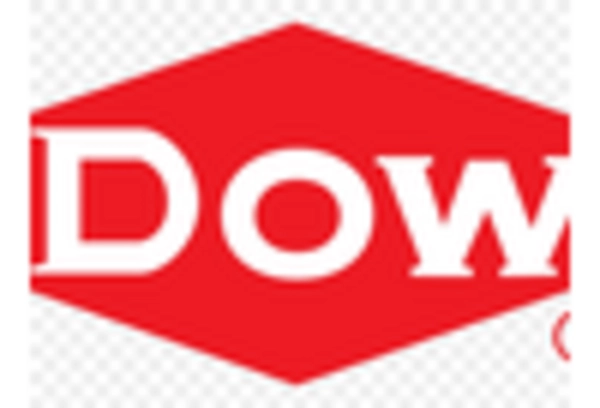
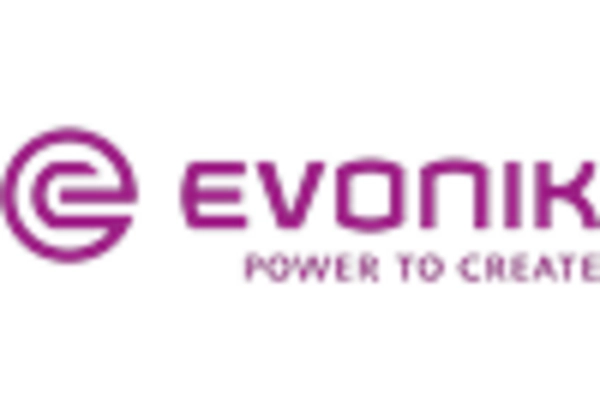
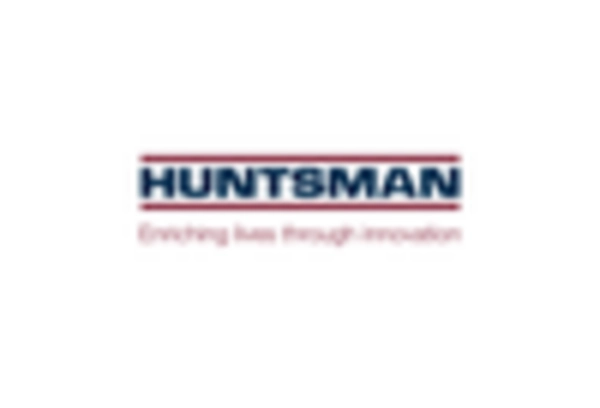
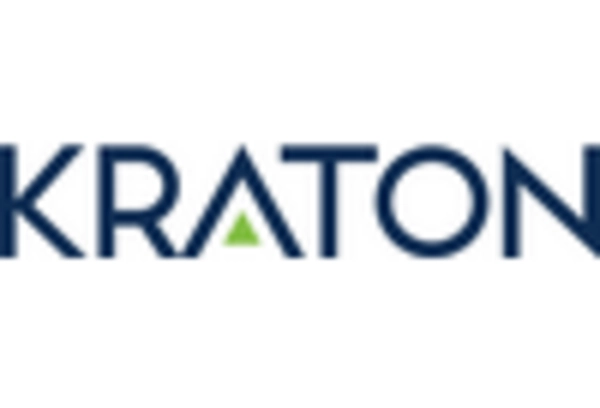
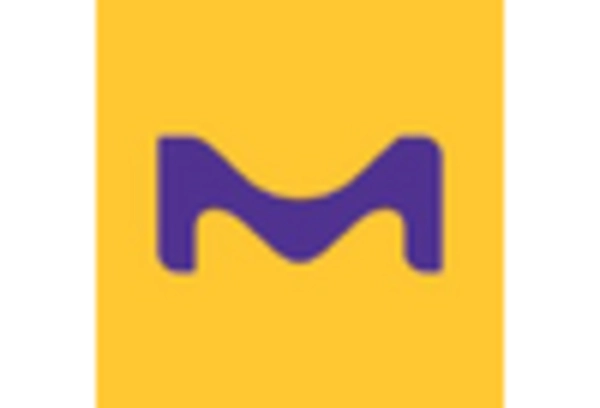









Leave a Comment